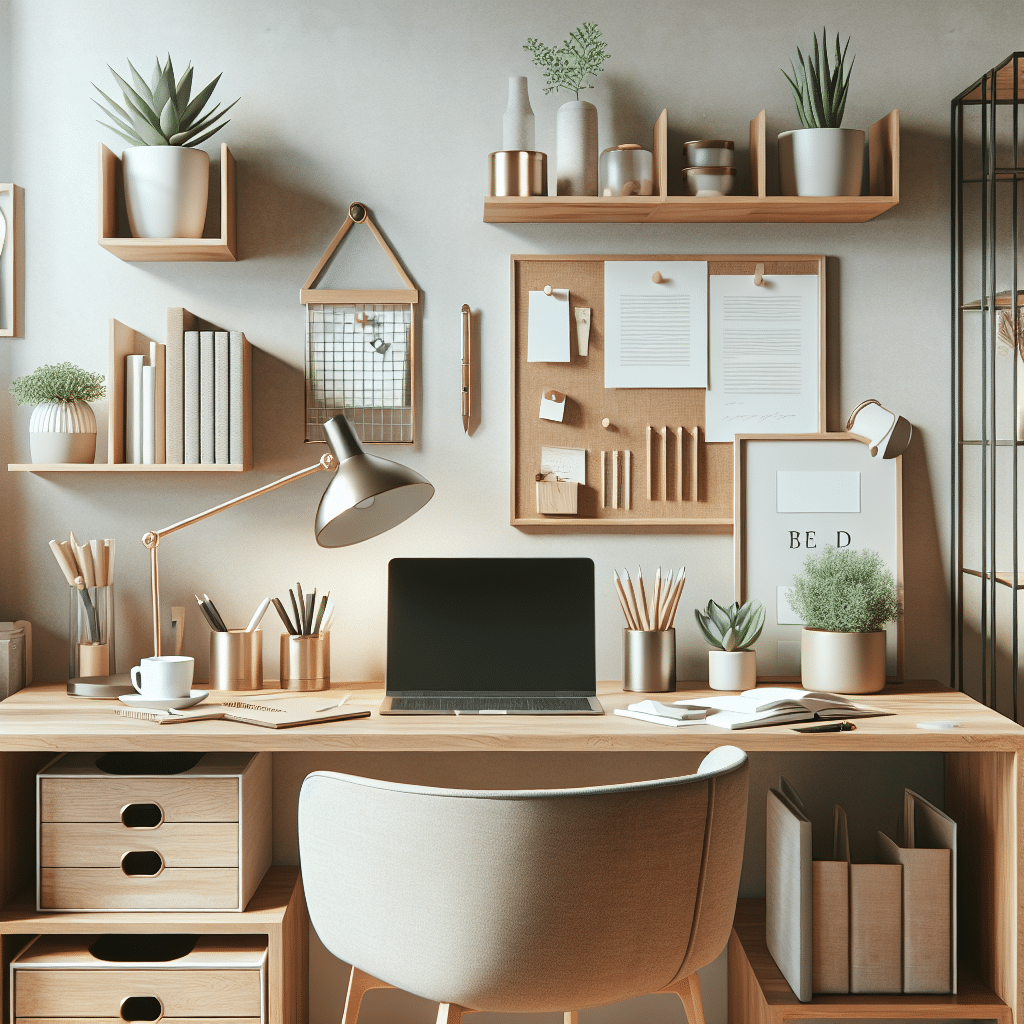Decluttering your home office is an essential step toward enhancing productivity and creating a conducive work environment. To help streamline this process, here’s a meticulously structured guide with practical tips for effective decluttering.
1. Set Clear Goals
Before diving in, establish your objectives. Are you aiming to create more workspace, find lost items, or enhance your focus? Setting clear goals will guide your decluttering efforts.
2. Create a Schedule
Allocate specific times for decluttering tasks. Breaking the project into manageable sessions prevents overwhelm. Consider using a timer to keep you motivated; 25-minute intervals using the Pomodoro Technique can be particularly effective.
3. Start with a Blank Canvas
Begin by emptying your desk and shelves. Removing items allows you to see what you truly use and need. This step can be eye-opening, revealing hidden clutter and unnecessary items.
4. Sort Items into Categories
Organize your belongings into categories: keep, donate, recycle, and trash. This structured approach simplifies decision-making and helps you focus on what remains essential.
5. Utilize the One-Year Rule
If you haven’t used an item in the past year, consider removing it. This time frame is particularly effective for files, tools, and gadgets that may have lost relevance.
6. Digitize Paper Documents
Reduce paper clutter by digitizing important documents. Use a scanner app to create PDFs of essential paperwork. This approach minimizes physical storage needs and makes finding documents easier.
7. Implement a Filing System
Create an efficient filing system for the documents you choose to keep. Use folders labeled by project, date, or priority. Consider color-coding for quick visual reference.
8. Optimize Desk Space
A cluttered desk can hinder productivity. Keep only essential items at arm’s reach, such as your computer, a notepad, and a pen. Utilize desk organizers for small items to maintain neatness.
9. Streamline Office Supplies
Inventory all office supplies and eliminate duplicates or items you rarely use. Limit yourself to what you truly need, and consider using smaller containers for storage.
10. Manage Cables and Chargers
Cables can quickly become overwhelming. Use cable ties or clips to organize and label cords. Consider investing in a cable management box to conceal them and create a cleaner look.
11. Prioritize Ergonomics
Decluttering can also mean improving your workspace ergonomically. Assess your chair, desk height, and screen placement to enhance comfort and reduce physical strain.
12. Create a “Done” Project Zone
Set aside a designated area for completed projects. Keeping finished work in this space prevents it from cluttering your active workspace. Periodically review and remove items that are no longer needed.
13. Use Vertical Space Wisely
Utilize wall-mounted shelves or pegboards to store items off your desk. Vertical storage maximizes workspace and keeps frequently-used tools within reach.
14. Implement a Daily Clean-Up Routine
Establish a habit of spending five to ten minutes at the end of each day to tidy up. This quick maintenance can prevent clutter from accumulating over time.
15. Reduce Visual Clutter
Limit personal items and decorative elements on your desk to two or three meaningful pieces. A less visually busy environment can help maintain focus and reduce distractions.
16. Involve the Whole Family
If your home office is shared, involve others in the decluttering process. Assign specific tasks to each person to speed up the process and encourage collective responsibility.
17. Set Up an Inspiration Board
Create a vision board or inspiration board that reflects your professional goals. This can serve as motivation without taking up too much space or cluttering your desk.
18. Evaluate Digital Clutter
Don’t forget about your digital workspace. Organize your computer files and emails, deleting or archiving unnecessary items. Use folders to categorize digital documents similarly to physical files.
19. Keep Reference Materials Minimal
Limit reference books and materials to what you need frequently. Consider using an online resource or e-books to decrease physical clutter.
20. Use Multi-Functional Furniture
Invest in multi-functional furniture, such as desks with built-in storage or foldable tables. This maximizes usability without consuming additional space.
21. Set Reminders for Regular Decluttering
Implement a regular decluttering schedule, such as monthly check-ins. Setting calendar reminders can help maintain a clutter-free environment long-term.
22. Consider Storage Solutions
Explore various storage solutions, such as under-desk drawers or filing cabinets. The goal is to provide a designated place for every item you decide to keep.
23. Embrace Minimalism
Adopt a minimalist mindset by questioning the necessity of each item in your workspace. The goal is to simplify and streamline what you own.
24. Create a Vision
Visualize your ideal workspace. This can guide you in determining what to keep or eliminate. Imagining a serene and organized environment motivates the decluttering effort.
25. Focus on Quality over Quantity
When choosing new office supplies or furniture, prioritize quality. Investing in durable, functional items can prevent frequent replacements, which contributes to clutter.
26. Seek Professional Help if Needed
If the task feels overwhelming, consider hiring a professional organizer. Their expertise can provide tailored strategies to fit your specific local context and needs.
27. Stay Committed to Change
After decluttering, make a conscious effort to maintain your tidiness. Regularly reassess your items and adjust as your needs evolve. Consistency is essential in keeping your home office effective.
28. Share Tips with Friends
Discuss your decluttering journey with friends or coworkers. Sharing experiences and strategies not only reinforces your commitment but can also inspire others.
29. Celebrate Small Wins
Recognize and celebrate progress, even in small increments. This positive reinforcement can motivate you to continue the decluttering process and maintain your newly organized space.
30. Consider Environmental Impact
During the decluttering process, think about how to dispose of items responsibly. Donate usable goods and recycle whenever possible to reduce your environmental footprint.
By following these comprehensive tips on decluttering your home office effectively, you can create a rejuvenating space that enhances productivity and fosters a more enjoyable work experience.
